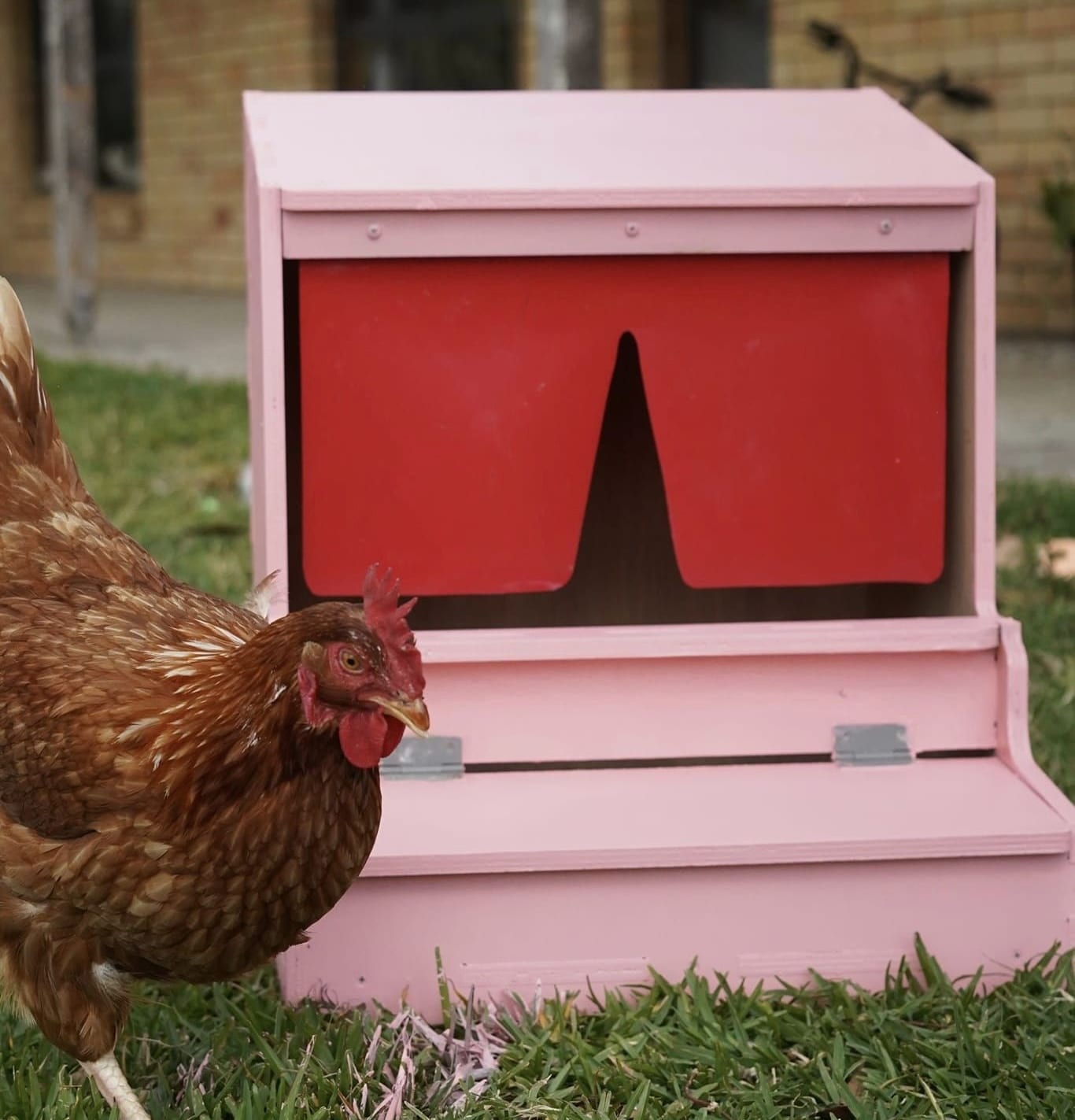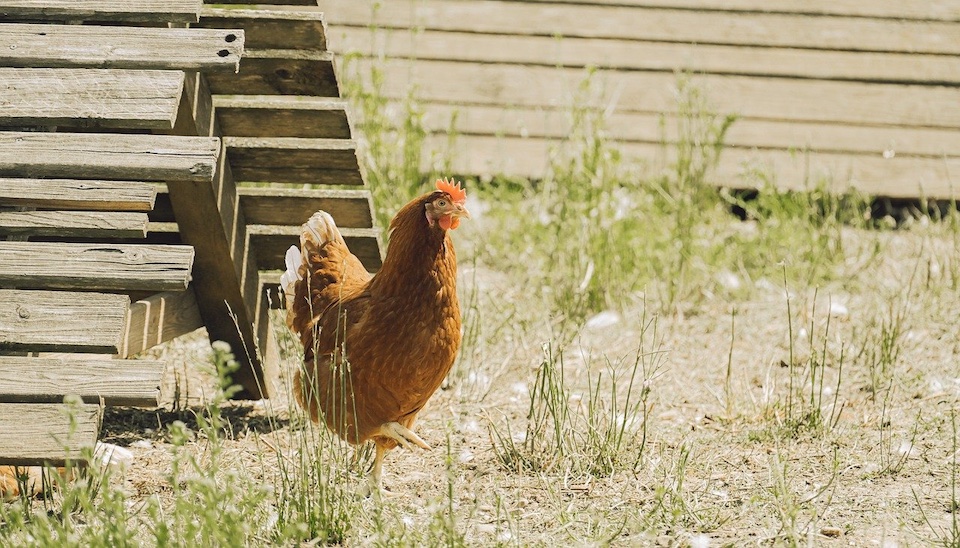How to Make the Perfect Nesting Box for Your Chickens
How to Make the Perfect Nesting Box for Your Chickens
Biologically, hens are designed to lay eggs. To prevent the backyard hens laying eggs all over the place, it is essential to make them a nesting box.
A well-designed nesting box not only keeps your eggs in one convenient spot for easy collection but also ensures your hens are comfortable and secure. Whether you’re interested in DIY nesting box ideas or want to understand what to put in nesting boxes for chickens, this guide has you covered.
For those looking for a high-quality, ready-made solution, check out Dine-A-Chook’s nesting boxes.
Chickens do not need anything to lay an egg. They can manage that on their own once they reach the right age and maturity. But if you have backyard chickens, it is vital to provide them with a coop which offers them protection from the weather as well as safety at night. The coop is also a great place to keep the eggs all in one basket so to speak.
What is a Nesting Box?
A nesting box is a purpose-built space where hens can lay their eggs comfortably. Providing a designated nesting area helps keep your chooks from laying in hard-to-reach or unsanitary places.
Here’s what makes a good nesting box:
- Constructed of sturdy materials like timber
- Positioned about 8 - 10 cm off the ground
- Draft-free, warm, and inviting
- Large enough—two to three times the size of your hens
- Topped with a roof or covering for coziness
- Lined with clean straw or dry mulch for comfort
Without a nesting box chickens will lay their eggs under plants, under the coop if height allows, in tall grass or anywhere that takes their fancy. This can attract predators and makes the eggs hard to find, leading to rotten eggs or unwanted chicks. Because of their natural instinct, it takes a little time for chickens to learn to use a nesting box in the coop.

How to Build a DIY Chicken Nesting Box
Building a nesting box for your chooks can be a simple and rewarding project. Here’s a step-by-step guide:
Materials Needed:
- Timber planks or plywood (weather-resistant)
- Nails or screws
- Wood glue (optional)
- Straw or dry mulch for lining
- Measuring tape
- Saw and hammer (or power tools if preferred)
- Hinges (optional, for a lid)
Instructions:
- Measure and Cut the Wood: Cut the timber or plywood into pieces for the base, back, sides, and top. A typical size for one nesting box is around 30 cm wide, 30 cm high, and 35 cm deep.
- Assemble the Box: Use nails or screws to secure the base, back, and side panels together. Make sure the box is sturdy and free from sharp edges that could harm the chickens.
- Attach the Top: Add a sloped roof to prevent chickens from perching on top. Use hinges for easy access if you want a removable lid for cleaning and egg collection.
- Lift Off the Ground: Ensure the box is positioned 8 - 10 cm off the ground to keep it dry and safe from pests.
- Line with Comfortable Material: Add clean straw or dry mulch to make the nesting box inviting and cozy.
Tips for Success:
- Ensure there are no gaps or drafts in the box.
- Sand any rough edges to prevent injuries.
- Place the box in a dark, quiet area of the coop for maximum comfort.
Great DIY Chicken Nesting Box Ideas
Here are some creative chicken nesting box ideas to recycle some old materials:
- Old wooden fruit crates – Simple, sturdy, and often the perfect size.
- Milk crates – Line them to prevent drafts and make them more inviting.
- Old mower grass catchers – Easy to clean and portable.
- Cardboard boxes – Affordable, but need replacing regularly.
- 20 L drums or large buckets – With the top cut off, they make excellent nesting boxes.
- Repurposed bar fridges – Lay them on their side, remove the door, and add a divider for multiple nests.
How Many Nesting Boxes Do You Need?
As a rule of thumb, one nesting box is sufficient for every 4-6 hens.
This means:
- For 10 chickens, plan for at least 2-3 nesting boxes.
- For 20 chickens, ensure you have at least 4-5 nesting boxes.
Chooks often prefer to lay where others have laid before, so even with multiple options, you might find your hens favouring one or two boxes.
The benefit of having one nest for multiple hens is that it discourages them from sleeping in it. If you have too many boxes, the hens are more likely to sleep and poop in them which will put them off laying eggs in the box.
Where to Locate a Nesting Box
Hens are most productive at laying eggs where they feel safe. Therefore you should put a nesting box in a quiet, dark corner of the chicken coop.
Somewhere they can have a little privacy to get on with the job. If you find the hens have located a different area in the coop to lay, use some scattered timber or rocks on the area to give them the incentive to look for somewhere else to lay the eggs.
What to Put in a Chicken Nesting Box
When considering what to put in a chicken nesting box, it’s important to keep it comfortable and clean.
Line the box with:
- Fresh straw or hay
- Dry mulch or wood shavings
- Soft, dry grass clippings (occasionally)
These materials make the box inviting and ensure your chooks have a safe, cosy spot to lay their eggs. You can also add some nesting herbs or in case you have mites or pests in the box, add some diatomaceous earth.
Regularly Collect the Eggs
It is crucial to clear the nest of eggs so the chicken will lay.
A couple of eggs in the nest won't put a hen off laying, but if it is full, they may find somewhere else. Once they get the hang of the nesting box, if it is empty they will happily fill it up again.
We recommend collecting eggs two times daily.
And if you prefer a ready made solution for easy egg collecting, check out our roll away nesting box design.
Make Separate Roosting Spots
Having separate roosting (sleeping) areas for the chickens is a must.
By having roosts, it helps keep the nesting boxes for nesting, meaning less cleaning. Also, having a clean nesting box means cleaner eggs for collection. If you have allocated roosting spots, then the chickens will use them for sleeping and the nests for laying.
Read also: best roost for chickens
Teach Them Where to Lay
Buy a nest egg from your supply store and place it in the nesting box. It helps the chickens begin to understand what the box is all about.
Important Tips for Successful Egg Laying
- If you spot a chicken laying outside the nesting box, pick her up and place her inside the box.
- Some chooks may find the nesting box so cosy that they sleep in it—move them to the roosting area at night to break this habit.
- Egg production can slow or stop during winter when there’s less sunlight. If this happens, consider adding artificial lighting in the coop.
- Contrary to some advice, locking chickens in the coop until mid-morning won’t necessarily make them lay in the nesting box. Egg production follows a 25-hour cycle, so hens may lay at any time. If your coop is attached to a safe, predator-proof pen, let your chooks come and go freely.
And if you're looking for top-quality, ready-made options, check out our range of nesting boxes in our store. All our nesting boxes are made in Australia and shipped to you in flat pack for easy assembly. We hope you like them!
Also read:



